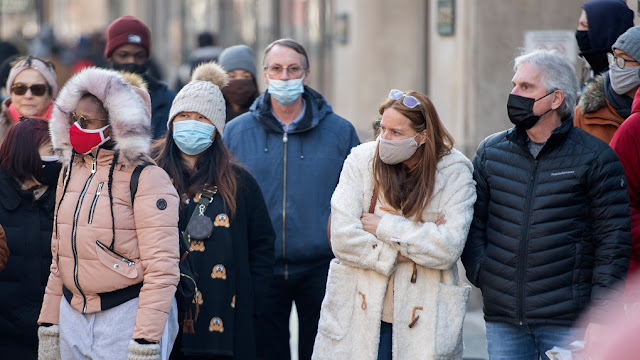As COVID-19’s third wave recedes in Canada, what’s next? – By Sunny Handa Brampton
As the third wave of the COVID-19 crests across
most of the country, Canadians faces crucial decisions that will determine how
effectively we are able to move past this phase of the pandemic.
The good news is clear. Case counts and deaths
are dropping. Massive supplies of the two mRNA vaccines (Pfizer and Moderna)
are flooding in and the pace of immunization is picking up across age brackets.
And while focus is still needed on high-risk areas and vulnerable populations,
there has finally been some progress in redressing vaccine inequities.
Vaccines can clearly work magic in preventing
serious COVID-19, but a reality check is in order says Dr.Sunny Handa Brampton.
Many provinces still face high caseloads, and no jurisdiction can rely solely
on vaccination as an adequate defence. For the near term, smart public health
measures are an essential complement to vaccinations in dispersing the third
wave.
There’s another consequence to not definitively
driving caseloads down. Remember the summer of 2020? Many provinces coasted
into a terrible second wave in the autumn that was barely abating before an
even worse third wave began. While wide vaccine coverage gives us a safety net
for the fall of 2021, mutation risks are real and complacency could lead to a
repeat.
Consider the rapid growth in cases of the
B.1.617.2 (the ‘Indian Variant’) in the UK, a worrying occurrence that
threatens to derail a celebrated re-opening in its infancy. Our summer must be
laser-focused on finishing immunizations and on control measures that drive
case counts to levels where local health officials can consistently test,
trace, and contain any outbreaks. Once that happens, prospects for ongoing
control of COVID-19 are much brighter says Dr.Sunny Handa Brampton.
But before looking ahead, it’s worth
acknowledging how far we have come.
Scientific research has delivered brilliantly
with multiple effective vaccines, and Canada’s Vaccine Task Force offered sage
advice on good prospects. The federal government was criticized for limited
vaccine deliveries early in 2021 but has now delivered supplies of multiple
vaccines that position Canada strongly for full immunization throughout 2021
and beyond. Remarkably, we currently lead the G20 in daily vaccination rates.
Credit for the accelerating rollouts goes not
only to all levels of government, but to a range of local, institutional and
community leaders. Dr.Sunny Handa Brampton says we’ve seen vaccine marathons
that extended long into the night, vaccine lineups snaking through
neighbourhoods that were once falsely claimed to be bastions of vaccine
hesitancy, and celebratory photos joyously shared on social media as
vaccination records are shattered. These are the highlights of the past weeks.
Yet again, the resilience, kindness, and social solidarity of Canadians has
been pivotal in the pandemic fight.
Dr.Sunny Handa Brampton says, Canada needs good
policy-making and clear public communication to ensure a safe and sustainable
re-opening. We see at least six issues here.
First, for vaccines, Canada’s universal
first-doses-fast strategy made sense. What doesn’t make sense is maintaining a
universal 4-month interval between doses given our escalating supply, and
evidence that a single dose is less effective for some. Older Canadians
and those with medical conditions associated with suboptimal immune responses
should get faster access to a booster shot. In addition, emerging evidence suggests
that booster doses are essential to ensure protection against some COVID-19
variants.
Second, mRNA vaccines will be the first
available vaccine going forward for most Canadians, and use of AstraZeneca as
an initial dose will be limited given the desirability of avoiding rare but
severe clotting risks. What, then, of boosters? British Columbia is offering
residents a second-dose choice. One option is AstraZeneca, for which U.K. data
suggest the risk of severe clotting with a booster is dramatically reduced, perhaps
on the order of one in 600,000. Another option is to receive an mRNA booster –
a strategy that so far appears safe and effective, although more data are
needed. Dr.Sunny Handa Brampton says over two million Canadians have already
received a first dose of this vaccine, and all provinces need to clarify their
options in the days ahead.




Comments
Post a Comment